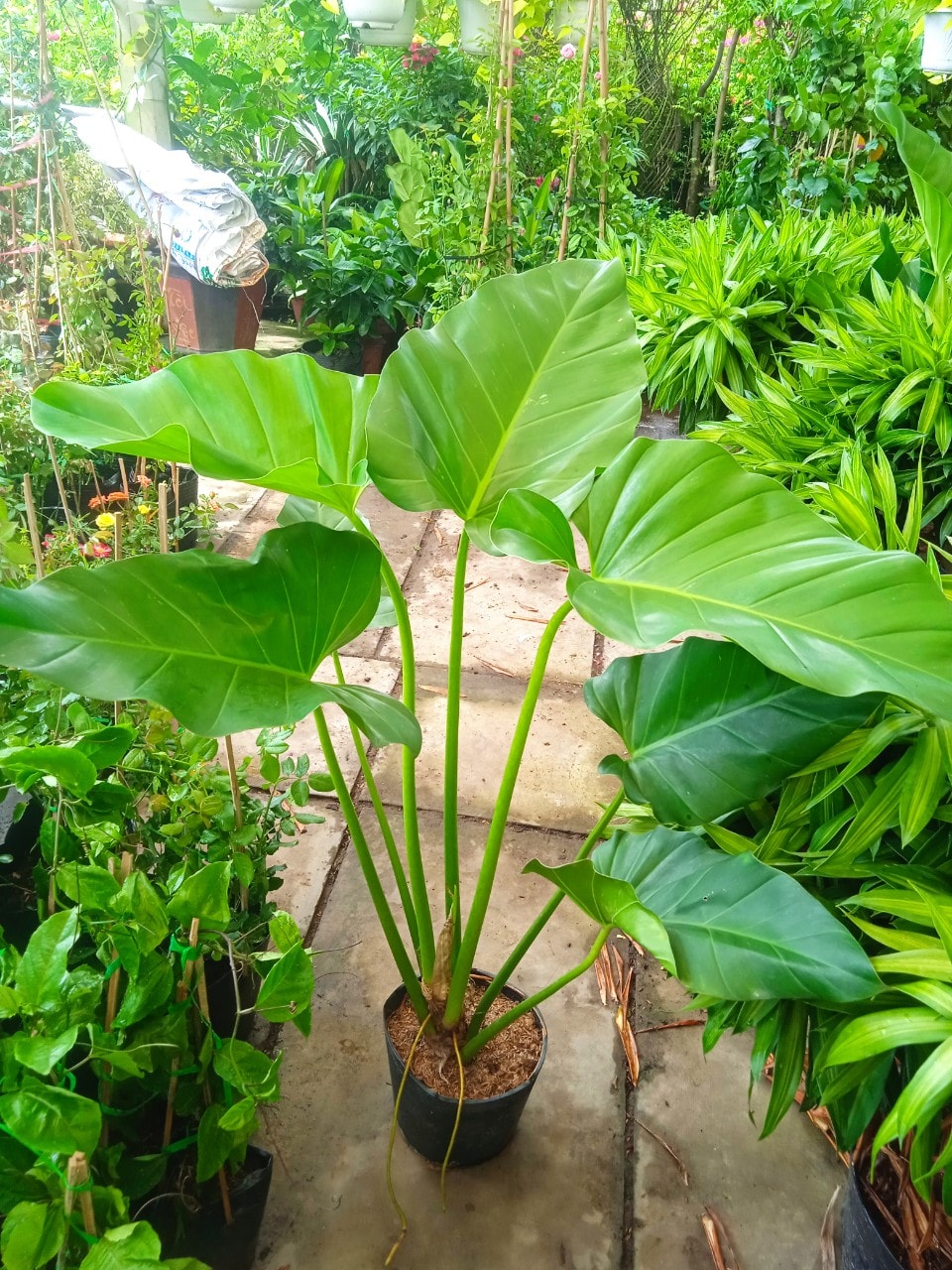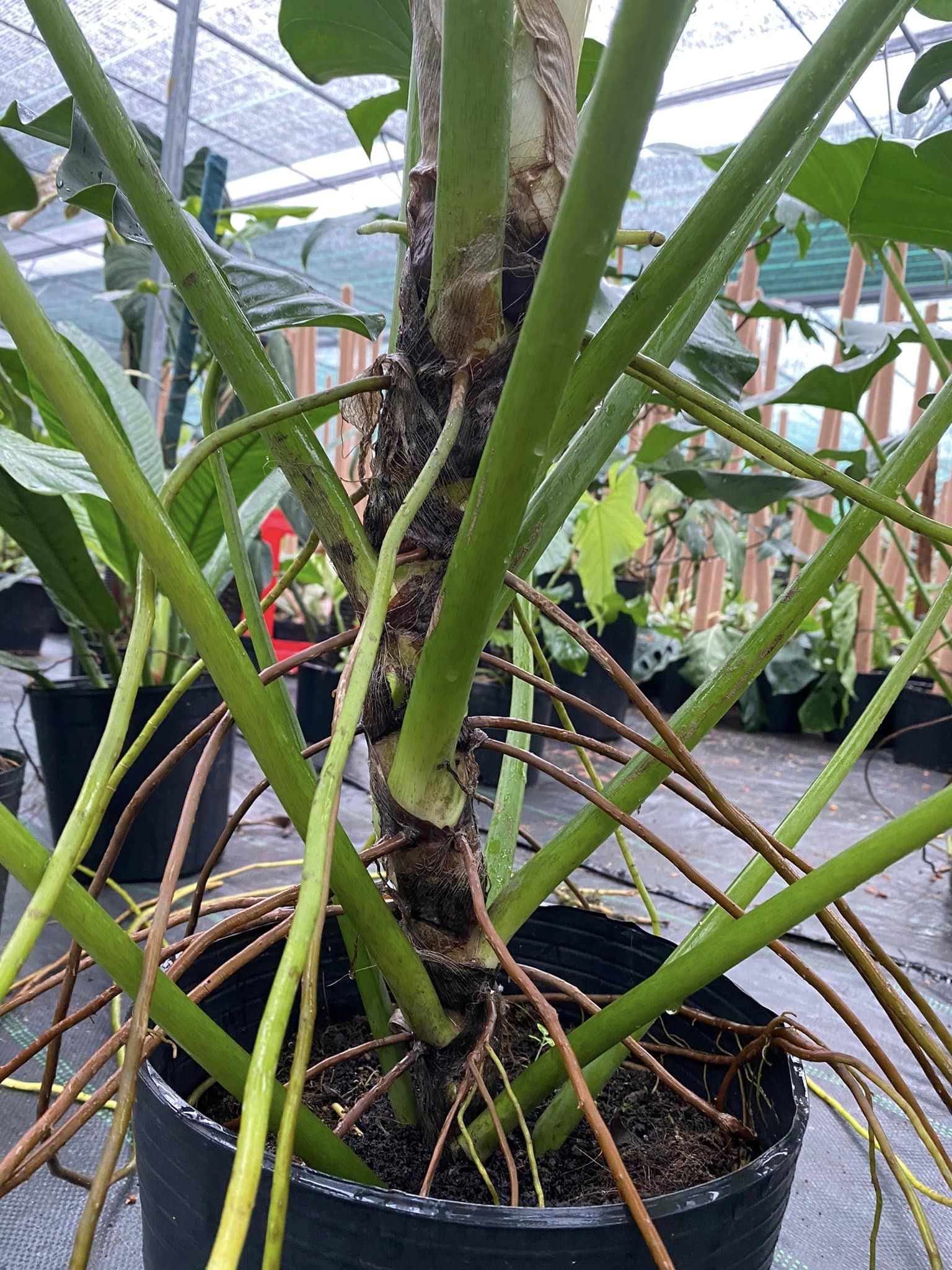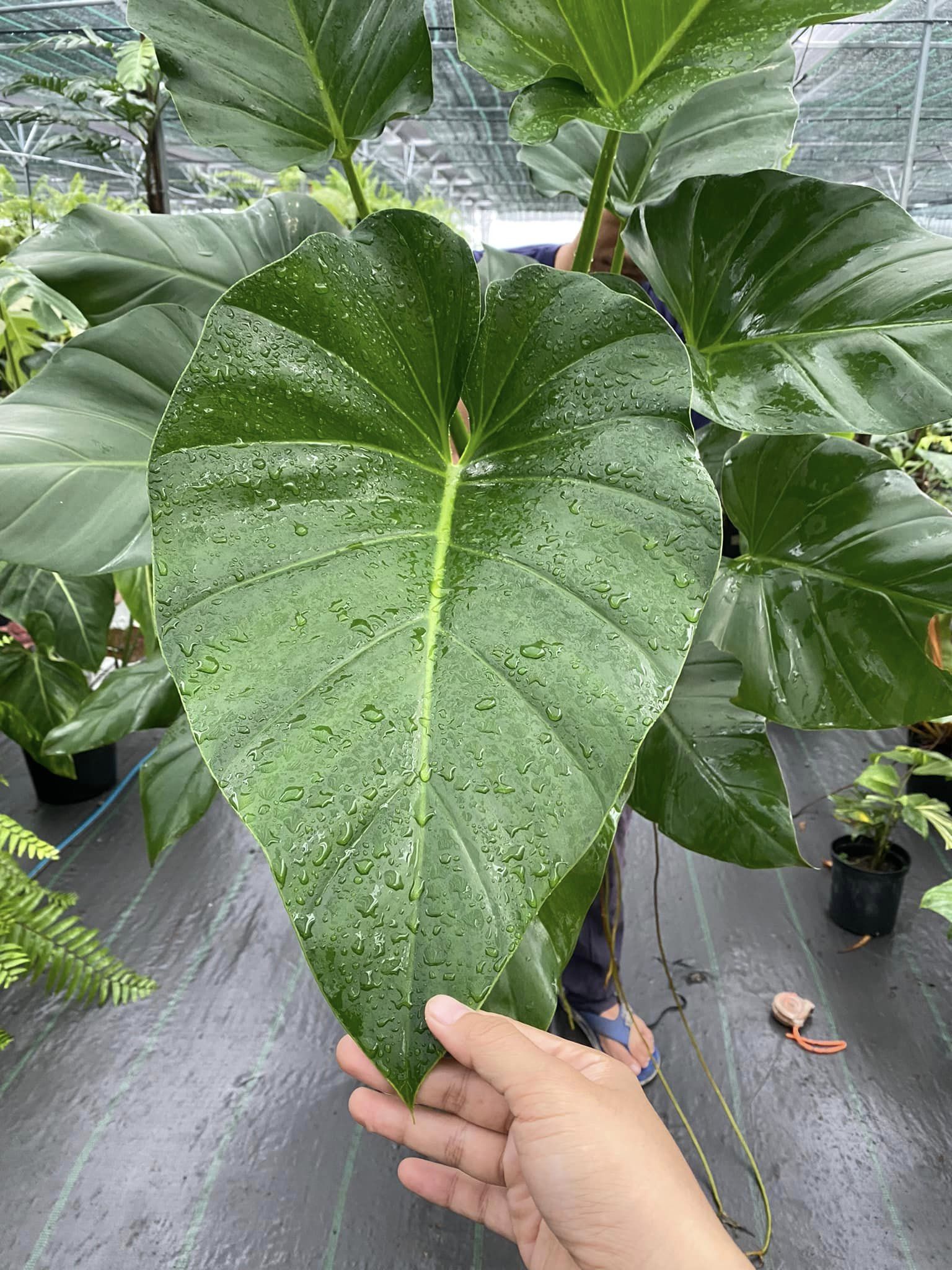Basic Information
The Philodendron Giganteum is a large and lush plant that can quickly grow several feet tall. Its huge leaves are a rich lustrous green and resemble elephant ears when it gets older. It belongs to the Araceae family and is indigenous to the Caribbean islands.



Light
The Philodendron Giganteum is a plant that requires 70-85% sunlight, but it can thrive in low filtered sunlight. The large, rich green leaves of this plant in nature indicate that it needs ample light, which is usually found under the canopy of tropical trees. Indoors, it can tolerate shade, but it prefers semi-bright, filtered light. Direct sunlight should be avoided as it can burn the foliage. In cold zones, fluorescent lights can substitute for natural light during winter.
Water
This type of plant thrives in moist conditions but it’s important to strike a balance when watering it. In tropical regions, it’s best to water the plant once every other day, while potted plants should be watered once the top layer of soil has become dry, especially during spring and summer. During the fall and winter seasons, the frequency of watering should be reduced, but the soil should not be allowed to dry out completely. In summer, it’s recommended to water the plant lightly twice a week, and minimally in winters if you live in colder regions.
Soil
Philodendron Giganteum is a plant that grows well in loose, nutrient-rich potting soil. For potted plants, it’s best to use a mixture of cactus or succulent mix along with perlite, peat moss, and organic material like coconut husk, brick bits, or bark. If you’re planting it outdoors, make sure the soil is rich in organic matter and drains quickly. It’s recommended to create raised spots or mounds to help with natural drainage.
Temperature
Philodendron Giganteum is a plant that thrives in room temperature with a temperature range of 55-80°F (13-27°C). During winter, it is best to keep it indoors to avoid exposure to temperatures below 55°F. It is also important to protect the plant from cold drafts and extreme temperature fluctuations, which can occur near doors, windows, or heating vents.
Humidity
To grow Philodendron Giganteum successfully, it is crucial to provide a humid environment. These tropical plants thrive in a high-humidity environment, ideally above 60%. Misting the plant regularly can help keep it fresh and clean, especially when indoor humidity levels are low during the winter months. You can also use humidifiers to create the ideal environment.
Fertilizer
Philodendron Giganteum benefits from regular feeding, but it can also thrive in soil enriched with decomposed leaves and bark. It’s recommended to fertilize the plant every two months during the growing season using a balanced organic fertilizer. However, it’s important to completely stop feeding it during winter. Over-fertilization can harm the plant, so it’s important to not exceed the recommended fertilization schedule.
Growth Rate
The Philodendron Giganteum is a houseplant that can grow exceptionally tall, reaching heights of over 10 feet. It typically grows at a rate of 6-12 inches per year in ideal conditions but can reach its full size in the wild. The plant’s leaves can also grow to be quite large, ranging from 12-20 inches indoors to 35 inches in its natural habitat.
Pet Safety
Philodendron Giganteum contains calcium oxalate crystals, which are toxic to both pets and humans. To avoid any harm, keep the plant out of reach of young children and pets. If you are concerned about toxicity, consider purchasing non-toxic houseplants instead.
Grow in Semi-Hydro
- Philodendrons, celebrated for their lush foliage and adaptability, thrive in semi-hydroponic systems such as LECA/Pon, thanks to their resilient root systems and preference for consistent moisture.
- Shifting a Philodendron to a semi-hydroponic setting works well using a Nutrient Stagnant Wicking (NSW) method, providing a stable and effective environment for growth.
- Within the LECA/Pon environment, Philodendron roots adapt swiftly, effectively managing any early challenges in adapting to the NSW system.
- For nourishing Philodendrons in semi-hydro systems, a nutrient solution with a concentration around 800-1000ppm is optimal.
- Philodendrons are versatile in adapting to a range of temperature and humidity levels, making them ideal for various indoor settings.
- Regular care involves keeping an eye on the water level in the reservoir and periodically flushing the system to ensure the Philodendron’s healthy and consistent growth.
- If your Philodendron is a climber, it’s a must to look at our Moss Pole guide to have a proper set-up.
Tips
- Ensure the plant gets enough light without direct sun exposure.
- Water properly, avoiding overwatering and underwatering.
- Use well-draining soil and avoid compact soil to prevent root rot.
- Maintain a stable, warm temperature.
- Keep the humidity high.
- Fertilize appropriately during the growing season.
- Regularly inspect for pests and diseases, as the Philodendron Giganteum is not immune to common plant problems
Try growing Philodendron Giganteum if you love large leafy tropical plants. Watch its glossy young leaves unfurl into bright green giants that even surpass the older leaves. Plant it outdoors in a large pot or directly in the ground for best results.
Happy planting! 🌱


